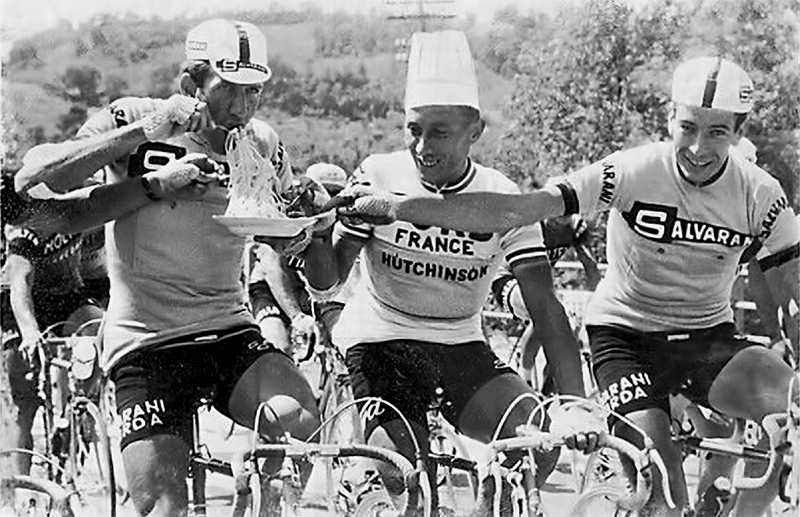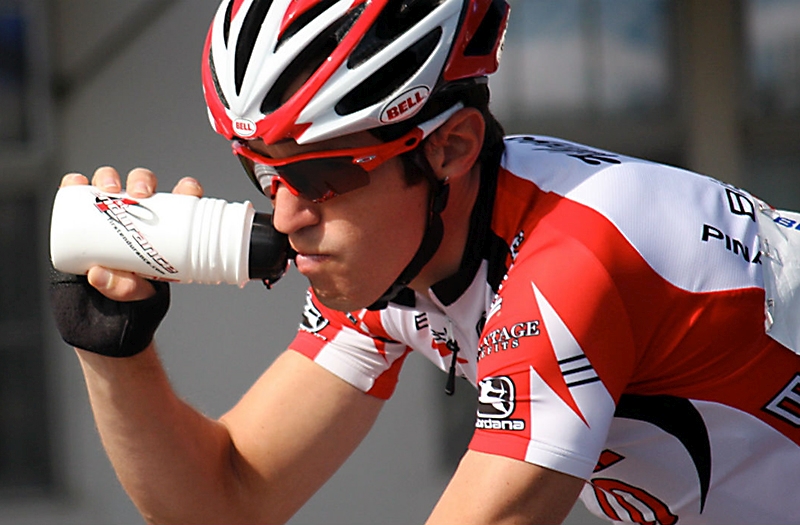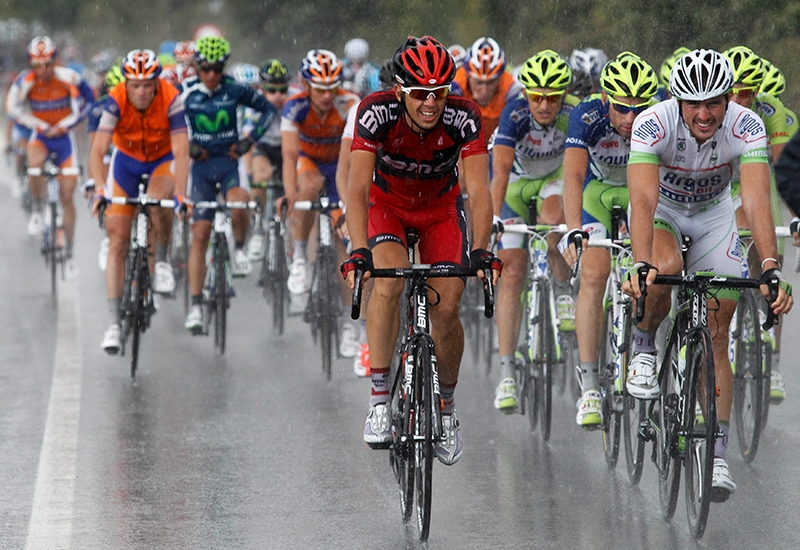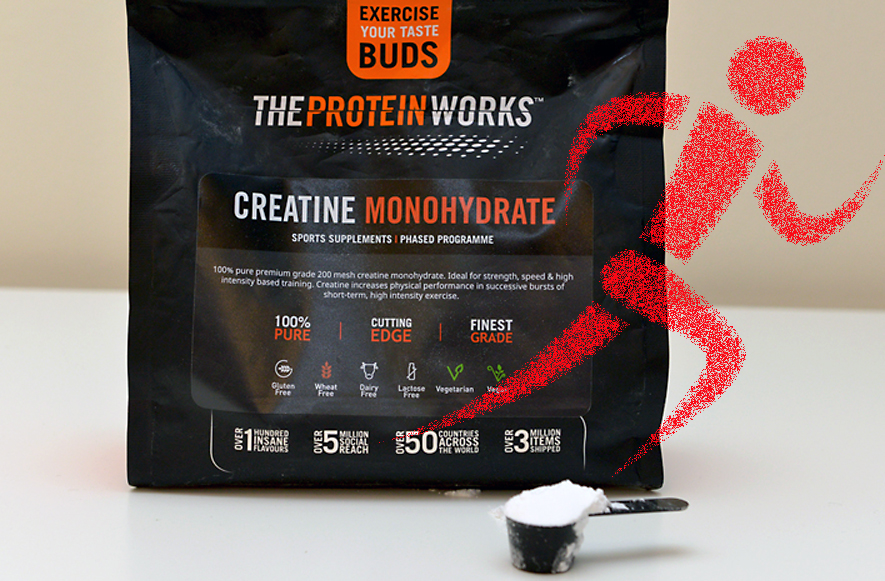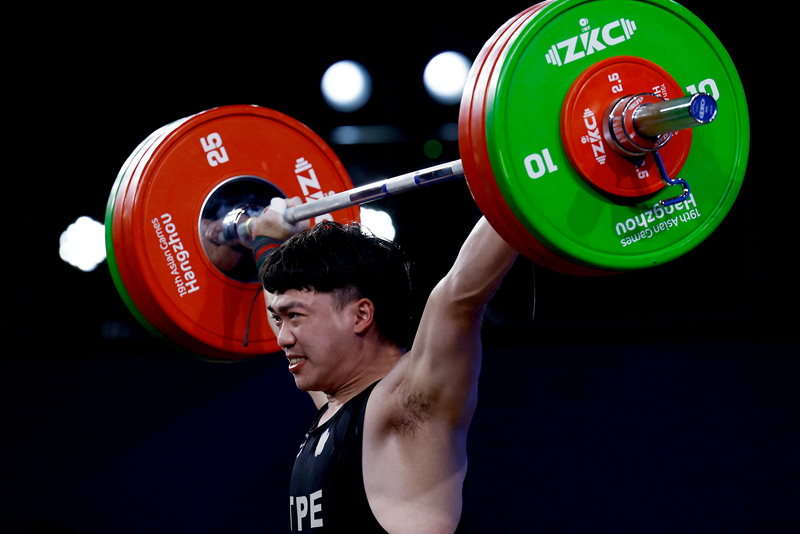You are viewing 1 of your 1 free articles. For unlimited access take a risk-free trial
Low-carbohydrate training: low or high performance?

Can periods of carefully timed low-carbohydrate intake improve endurance performance in the longer term? SPB looks at the most up-to-date evidence
All athletes know (or should know) that carbohydrate is the body’s preferred fuel for high-intensity exercise. That’s because stored muscle carbohydrate (glycogen) can be rapidly broken down to release energy in the working muscles. And while fat is also a very useful source of fuel for exercise, its oxidation for energy requires more oxygen consumption compared to carbohydrate; one litre of oxygen used to oxidize fat in the muscle generates around 15% less of the key energy molecule used by muscles to actually power muscle contraction (adenosine triphosphate or ATP) than when the same amount of oxygen is used to oxidize carbohydrate. Since oxygen supply to the muscles is strictly limited by an athlete’s ‘maximum aerobic capacity’, getting as much ‘energy bang per buck’ from the oxygen consumed is vital – hence the advantage of carbohydrate as a fuel source, especially during intense exercise (see figure 1).Figure 1: Energy contribution from fat with increasing intensity

At moderate exercise intensities (where oxygen demand can easily be met), fat oxidation provides a very significant amount of energy. However, once exercise intensity exceeds around 80% of maximum oxygen uptake (80% VO2max – most endurance competition is performed at or above this threshold), the contribution from fat oxidation falls rapidly, with carbohydrate oxidation becoming by far the most dominant source of energy.
Limits of carbohydrate fueling
The energetics of carbohydrate oxidation explains why for many decades, most sports nutritionists have recommended the use of a high-carbohydrate diet to maximize endurance performance(1). However, despite the advantages of fueling exercise with carbohydrate, there are also drawbacks. Firstly, the amount of carbohydrate storage within muscles as muscle glycogen is also limited. This means that once exercise duration exceeds around two hours and glycogen reserves become progressively depleted, and the rate of fat oxidation must be necessarily increased. With increasing fat utilization, the energy yield per unit of oxygen consumed falls – ie the athlete’s pace has to drop somewhat to compensate. Secondly, a more theoretical concern is that when muscles are always trained with ample carbohydrate to draw on, fat adaptation is not maximized – ie the muscles do not become as efficient at fat burning as they could be because they’re not frequently trained in a carbohydrate-depleted state.Low-carbohydrate training
For the reasons given above, a number of sports nutritionists have questioned whether always training with abundant carbohydrate available – ie while consuming a high-carbohydrate diet and carbohydrate drinks and gels when on the move – is wise. Instead, they argue that a more targeted approach using carbohydrate periodization could produce superior results. The theory is that by undertaking some training in a carbohydrate-depleted state, the process of fat burning can be upregulated. Combined with high carbohydrate intake in the 2-3 days before a race or competition, this enables the athlete to go to the start line fully loaded with muscle glycogen while at the same time having superior fat-burning capacity – the best of both worlds. But does this theory translate into practice?There certainly good evidence that training in a carbohydrate depleted state can improve fat adaptation. Firstly, low or depleted-carbohydrate training is known to stimulate the synthesis of mitochondria in muscle cells(2). The mitochondria can be thought of as ‘aerobic energy factories’ within muscle cells, which are critical for aerobic energy production (the only method of extracting energy from fat). This increase in mitochondria is also thought to help explain the observation that athletes who train with reduced carbohydrate availability invariably improve their ability to oxidize fat for energy(3) – confirmed by studies on both recreationally active individuals and endurance athletes(4,5).
The key issue of course is whether the increased mitochondrial density in the athlete’s muscle and superior fat burning capacity really does result in improved endurance performance. After all, theory is one thing but practice is another. Also, there are a couple of significant drawbacks to training in a depleted or low-carbohydrate state. The biggest is that when muscle glycogen levels are low, the potential quality of any training session will be inevitably reduced. For example, it’s extremely difficult to carry out high-intensity training such as intervals when glycogen depleted, yet we know that high quality interval sessions are one of the most powerful tools of all for increasing endurance performance (see these articles for a more detailed discussion). So the question is therefore, how do the pros and cons of periodized carbohydrate intake balance out?
New research
A new study published earlier this week in the Journal of the International Society of Nutrition has attempted to answer this very question(6). In this study, Danish researchers carried out a systematic review of all the previous studies on carbohydrate periodization and the effects on endurance performance compared to the more traditional route of a routinely high-carbohydrate diet. To qualify for inclusion, these studies had to meet the following criteria:- The study must have included both male and female athletes.
- Athletes needed to be fit endurance athletes (VO2max at least 55 or 60 mls/kg/min for female and male athletes respectively).
- The intervention period had to be at least in excess of one week with periodized carbohydrate restriction at least three times per week.
- Measurements of endurance performance were made before and after the training period,
The findings
When the data from the studies was pooled and analyzed using sophisticated statistical techniques, the key finding that emerged was that overall, the use of periodic carbohydrate restriction did NOT significantly enhance endurance performance in well-trained athletes. Given the amount of attention this approach has received, and its popularity with many endurance athletes, these findings are somewhat surprising. Having said this, the two studies that used the sleep-low approach did find a slight improvement in performance.Following three weeks of training, 10km run time, preceded by 40km preload cycling, was improved by 3% in the sleep-low group, whereas it remained unchanged in the control group(7). Similarly, time to complete a 20km cycling time-trial was improved by 3% solely in the sleep-low group following an intervention lasting only one week(8). But even with these studies, the researchers cautioned that the findings are far from robust because a) no analysis of the levels of muscle glycogen were carried out to confirm that low/depleted carbohydrate training had in fact occurred the next morning and b) the gains in running performance may have come about simply because the sleep-low group had lost some body mass, thereby improving their power-to-weight ratio (weight loss is something that can also be achieved on a high-carbohydrate diet).
Conclusions and advice for endurance athletes
In summing up, the researchers concluded that based on the available literature to date, periodized CHO restriction does not necessarily enhance performance in endurance-trained athletes for a number of possible reasons:- Overall training volume during low-carbohydrate periods is likely to be reduced.
- High-quality, high-intensity training during low-carbohydrate periods is very difficult to carry out.
- Well-trained endurance athletes following a traditional high-carbohydrate diet already have very efficient fat-burning capacity.
- Repeated periods of low-carbohydrate intake may reduce the efficiency of carbohydrate-burning, making it harder to sustain the very high-intensity levels of performance needed in a race situation.
References
- Sports Med (Auckland, NZ). 2013;43(11):1139–55
- Metab Clin Exp. 2005;54(8):1048–55
- Sports Med (Auckland, NZ). 2015;45(Suppl 1):S33–49
- Exp Physiol. 2010;95(2):351–358
- Am J Physiol Regulatory, Integrative Comparative Physiol. 2013;304(6):R450–8
- J Int Soc Sports Nutr. 2021 May 17;18(1):37. doi: 10.1186/s12970-021-00435-3
- Med Sci Sports Exerc. 2016;48(4):663–72
- Nutrients. 2016;25:8(12)
Newsletter Sign Up
Testimonials
Dr. Alexandra Fandetti-Robin, Back & Body Chiropractic
Elspeth Cowell MSCh DpodM SRCh HCPC reg
William Hunter, Nuffield Health
Newsletter Sign Up
Coaches Testimonials
Dr. Alexandra Fandetti-Robin, Back & Body Chiropractic
Elspeth Cowell MSCh DpodM SRCh HCPC reg
William Hunter, Nuffield Health
Keep up with latest sports science research and apply it to maximize performance
Today you have the chance to join a group of athletes, and sports coaches/trainers who all have something special in common...
They use the latest research to improve performance for themselves and their clients - both athletes and sports teams - with help from global specialists in the fields of sports science, sports medicine and sports psychology.
They do this by reading Sports Performance Bulletin, an easy-to-digest but serious-minded journal dedicated to high performance sports. SPB offers a wealth of information and insight into the latest research, in an easily-accessible and understood format, along with a wealth of practical recommendations.
*includes 3 coaching manuals
Get Inspired
All the latest techniques and approaches
Sports Performance Bulletin helps dedicated endurance athletes improve their performance. Sense-checking the latest sports science research, and sourcing evidence and case studies to support findings, Sports Performance Bulletin turns proven insights into easily digestible practical advice. Supporting athletes, coaches and professionals who wish to ensure their guidance and programmes are kept right up to date and based on credible science.

